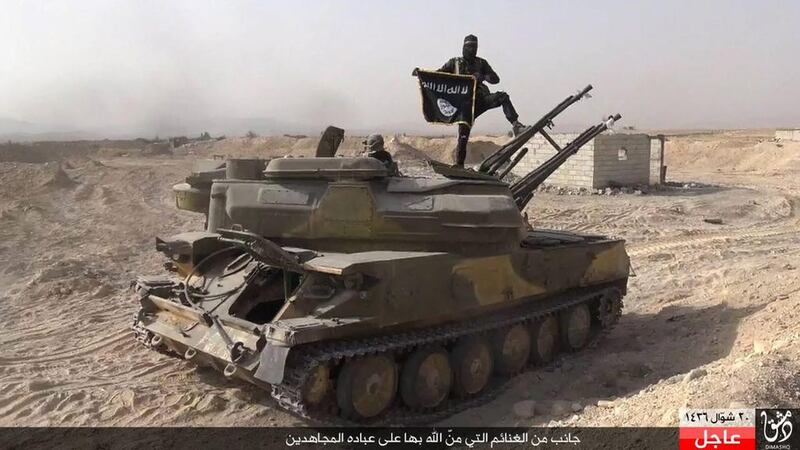Could we be facing the prospect of boundaries in the Middle East being redrawn, or seeing states reconstituted out of all recognition? In the past week, two experts have suggested this is the only viable solution to the civil wars in Iraq and Syria and to defeating ISIL.
Anatol Lieven, a professor at Georgetown University in Qatar and a former chair of international relations and terrorism studies at King’s College, London, advocates “the creation of fully autonomous areas in Sunni northern Iraq and eastern Syria, along similar lines to the present Kurdish region of Iraq and with full control over their internal affairs”.
Writing in Foreign Affairs, the scholar Barak Mendelsohn goes further. American "attachment to the artificial Sykes-Picot borders demarcated by France and Britain a century ago no longer makes sense", he argues, adding that Syria and Iraq are finished as unitary states. He proposes "an independent Sunni state that would link Sunni-dominated territories on both sides of the border".
This sounds remarkably radical, but US vice president Joe Biden, for one, can feel somewhat justified after the fact. He had suggested tripartite autonomy in Iraq nearly 10 years ago – “giving each ethno-religious group – Kurd, Sunni Arab and Shiite Arab – room to run its own affairs”. He may not have included the Sunni areas of Syria at that point, but then that was before Bashar Al Assad declared war on his own people, and before the rise of ISIL and the effective disappearance of the border with Iraq.
Drastic measures may be necessary to restore peace. And the boundaries negotiated in 1916 by Sir Mark Sykes for Britain and Francois Georges-Picot for France were not only artificial, they were suspiciously straight. Sykes declared: “I should like to draw a line from the ‘e’ in Acre to the last ‘k’ in Kirkuk.” Moreover, the borders were agreed on without the knowledge or participation of any of those inhabiting the lands being dismembered by the imperial powers.
Not obviously present, either, is the glue that could hold these states together again. Baathist nationalism is a spent and discredited force, and when even getting all the various factions around a table is a near impossibility, locating a creed which could unite the populations of these two countries will be a Herculean task.
There may be a logic to partition, then. If separate states for Sunnis, Shias, Alawites and Kurds is what is necessary to keep a new peace, then legalistic niceties about maintaining the integrity of states that were only created in the 20th century should not stand in the way.
What is worrying, however, is the implication: that states can only be stable and have a sense of internal coherence if they are based on a single ethnicity or culture. This is, after all, effectively what is being said about Iraq and Syria. Some countries are constituted more or less on those lines, for reasons of history or geography, with Korea, Japan, Portugal and Poland being statistically among the most ethnically and culturally homogenous.
But many others have long contained significant minorities who at the very least have been tolerated, and at best have been regarded as contributing to an enriching diversity. And surely this, not separation, is the model we would rather encourage.
I wrote recently about the glories of Andalusia, where Muslims, Christians and Jews built a civilisation hundreds of years ahead of a Europe still mired in the Dark Ages. The Ottoman and Roman empires were also remarkable for their diversity. In the former, while the sultan was Turkish, a high proportion of Grand Viziers were Albanian; in the latter, emperors hailed from Spain, Africa, the Middle East, Eastern Europe and across the territories they ruled.
The United States of America today is, in its finer moments, an example of a happily diverse nation which aims, as per the motto inscribed on its Great Seal, for “e pluribus unum” – out of many, one. Proof that this remains the vision of many came this week, when most of the Republican presidential candidates condemned Donald Trump’s bizarre and divisive call to ban Muslims from temporarily entering the country.
If such unity is now thought to be unachievable in Syria and Iraq, Mr Biden's endorsement of a semi-dismembered Iraq may now seem to have been ahead of its time. But it is worth remembering that it was inspired by what now appears to be a failure – the divided Bosnia that was the result of the Dayton Peace Accords in 1995. It may have been true, as Biden wrote in 2006, that “Bosnians have lived a decade in relative peace and are now slowly strengthening their common central government”.
Today, however, forgiveness and reconciliation are absent, and the structures created to keep Bosniaks and Serbs apart but still within the same state have burdened them with a sclerosis-inducing number of administrative layers. Unemployment is rampant, racial divides are entrenched and history – such as the instances of genocide – is being denied in some quarters. If this is what success looks like, it is not going to gladden the hearts of many in Syria and Iraq.
It may be that the boundaries of those states were hastily and thoughtlessly drawn, and perhaps re-delineating them, either within or without, will be necessary.
Peace is always a prize. But it should not be forgotten that, just as in Bosnia, peoples of different creeds and ethnicities had lived together mostly harmoniously for decades before the triumph of those who sowed narrowness and hatred. A new map of the Middle East may represent hope for the future – but it will also be a monument to the failures of the past.
Sholto Byrnes is a senior fellow at the Institute of Strategic and International Studies, Malaysia





